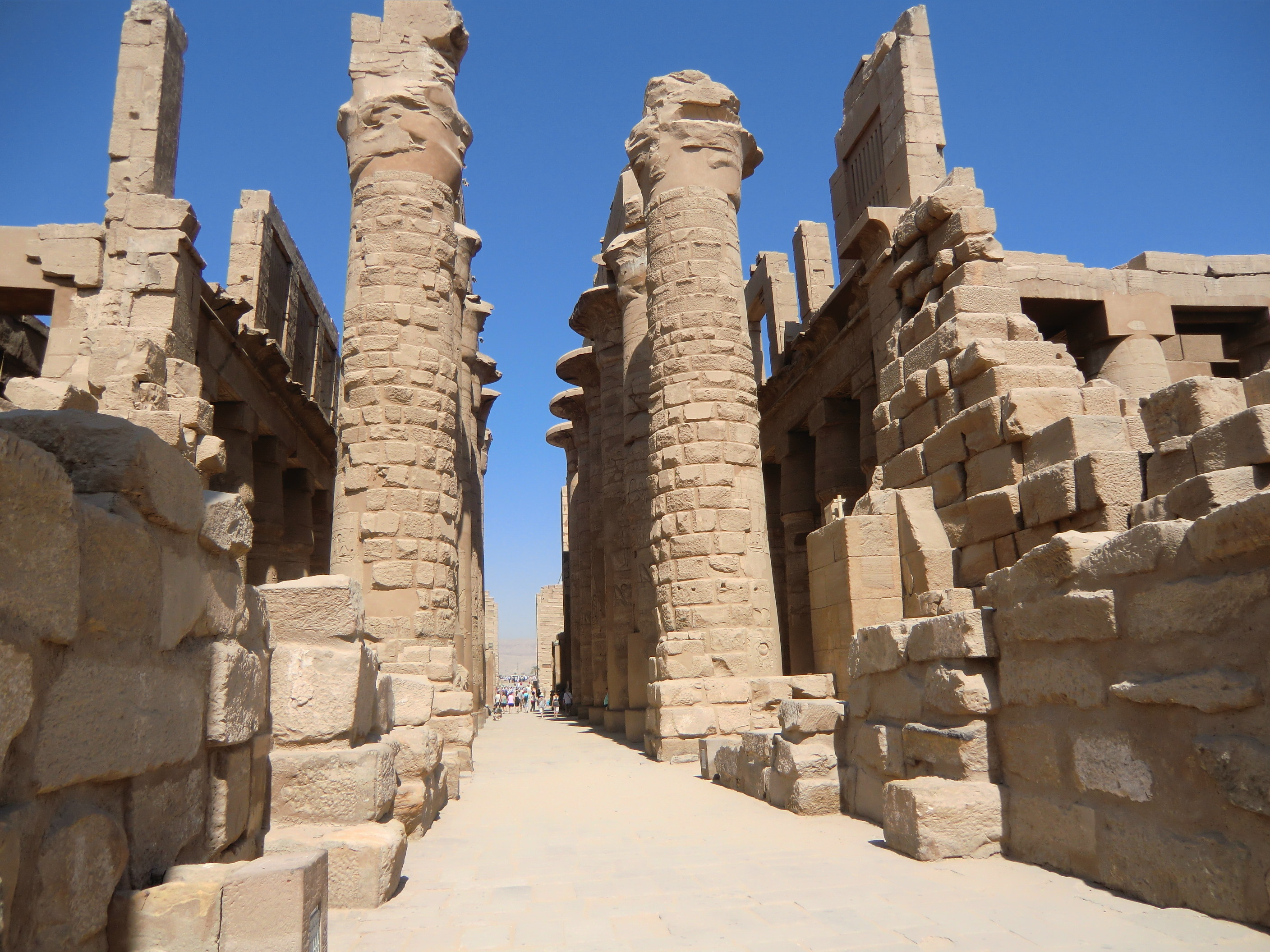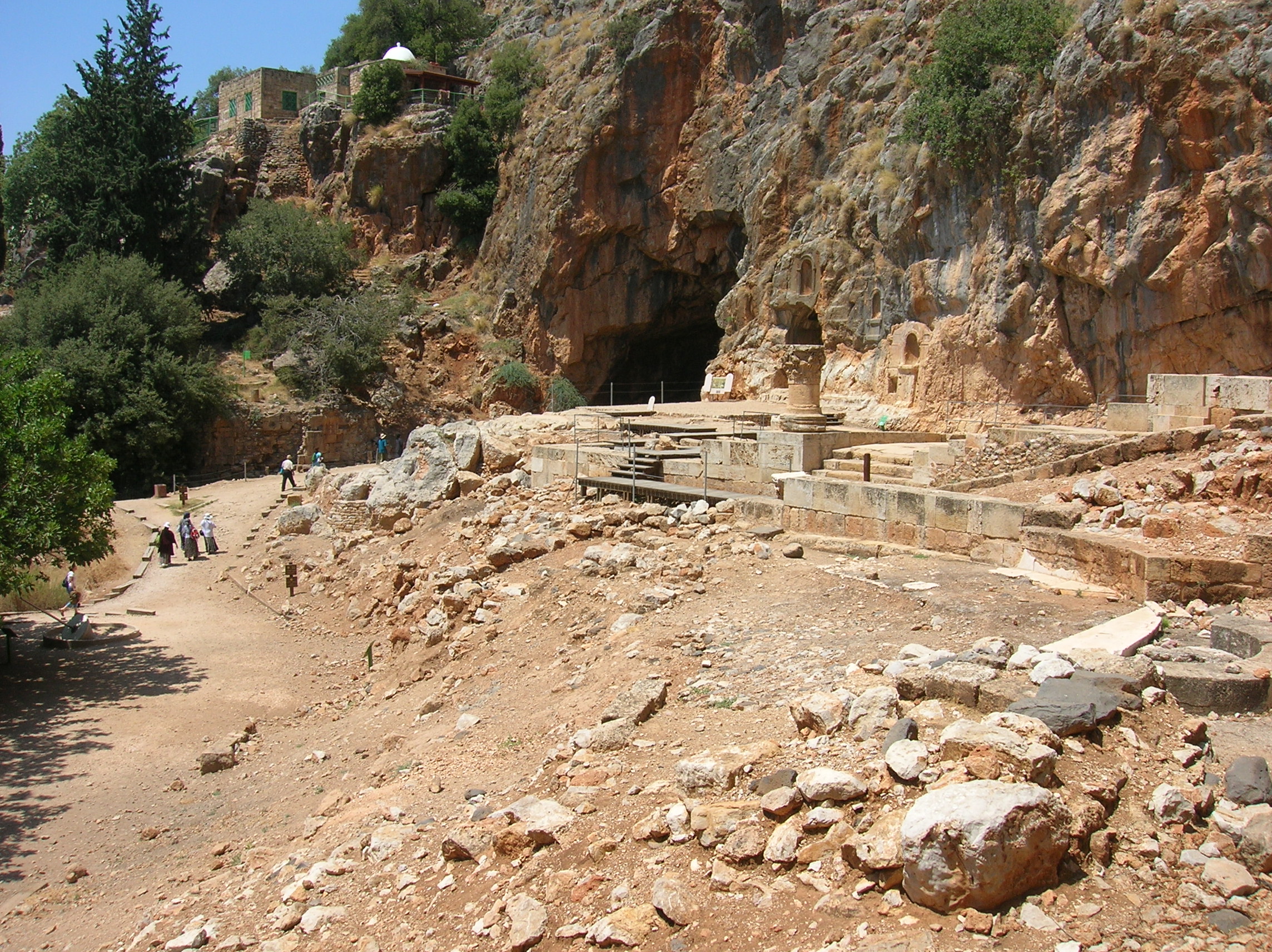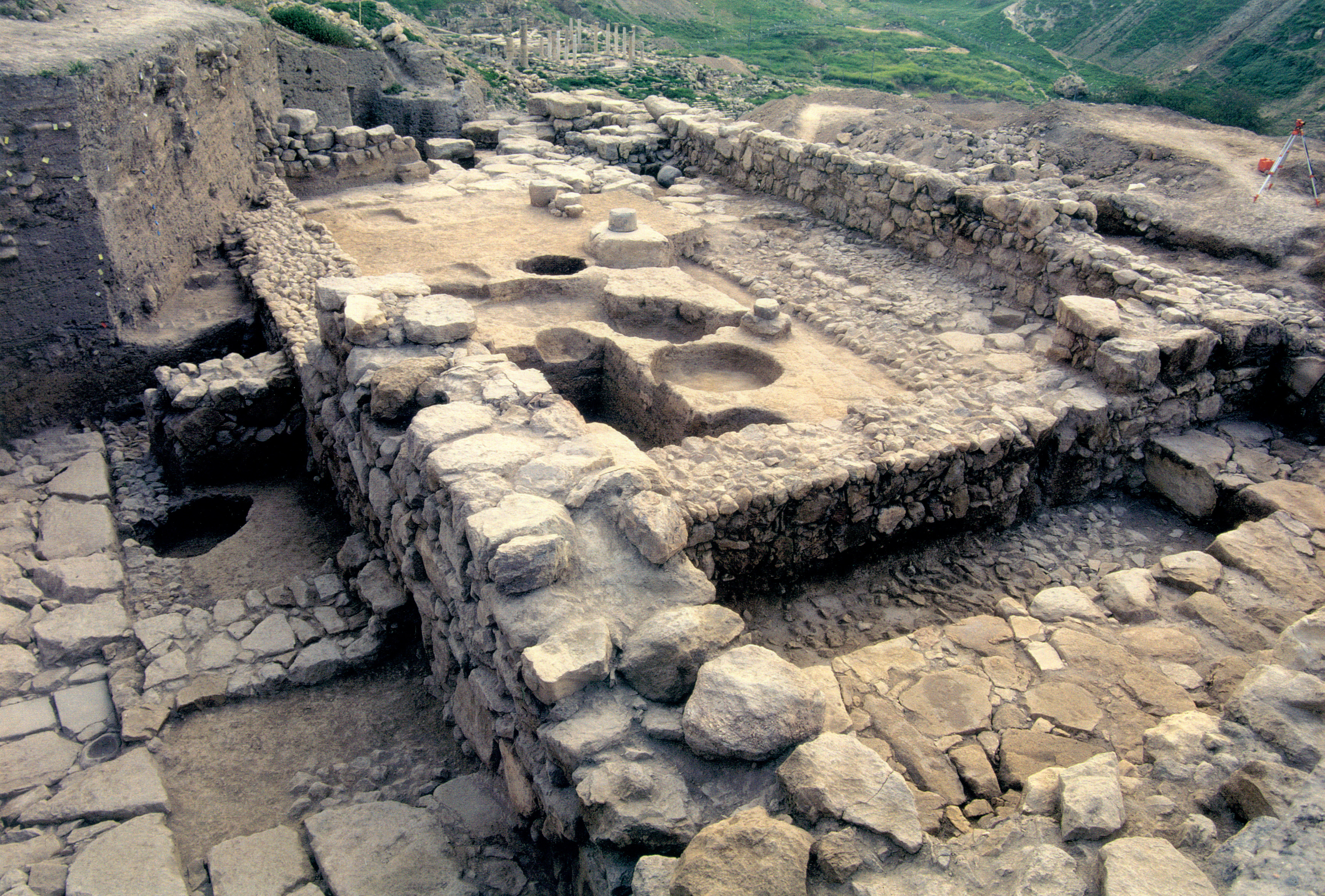|
Tell-Ashtara
Tell Ashtara ( ar, تل عشترة) is an archaeological mound south of Damascus. The Bronze Age city that once stood here may have been mentioned in the Amarna letters correspondence of 1350 BC as Aštartu, and is usually identified with the Biblical city of Ashtaroth. Aštartu in Egyptian texts Aštartu is only referenced in two of the 382-letter Amarna corpus, in letters EA 256 and EA 197 (EA stands for 'el-Amarna'). EA 197 is catalogued as ''"Biryawaza's plight"''. Biryawaza was the mayor of Damascus, called ''Dimasqu'' in the letters' Akkadian. EA 256 is a story concerning Mutbaal, the son of Labaya, and the Habiru, in regard to the whereabouts of Ayyab, who may be in Pihilu, modern day Pella, Jordan, and is a letter of intrigue, catalogued as ''"Oaths and denials"'', and lists 7 cities located in the Golan area. Ayyab was the king of Aštartu. He authored of one surviving letter to the Egyptian pharaoh, listed as EA 364. Aštartu is mentioned in the Annals of Thutm ... [...More Info...] [...Related Items...] OR: [Wikipedia] [Google] [Baidu] |
Al-Shaykh Saad
Al-Shaykh Saad ( ar, الشيخ سعد ''ash-Shaykh Saʿad''; also Romanized ''Sheikh Saad''), historically also called Karnaim and Dair Ayyub ("Monastery of Job"), is a town in southern Syria, administratively part of the Daraa Governorate, located northwest of Daraa on the Jordan–Syria border. Nearby localities include Nawa, Jasim and al-Harrah to the north, Izra and al-Shaykh Maskin to the east, Tafas and Da'el to the southeast, and Adwan and Tasil to the west and Jalin to the southwest. According to the Syria Central Bureau of Statistics, al-Shaykh Saad had a population of 3,373 in the 2004 census. Crusader/Ayyubid period During the Crusades, the town was part of the Principality of Galilee. In 1129 the town was ceded by William I of Bures, Prince of Galilee, to the Abbey of St. Mary of the Valley of Jehoshaphat. This transfer was noted in the records of Baldwin II in 1130, and of Pope Anastasius IV in 1154. In June 1187, before the Battle of Hattin, Saladin chose to ... [...More Info...] [...Related Items...] OR: [Wikipedia] [Google] [Baidu] |
Biryawaza
Biryawaza was a powerful ruler in the area of Egyptian controlled Syria in the middle fourteenth century BC. He is often mentioned in the Amarna letters, although his title is never given clearly. Some scholars describe him as the king of Damascus, and others think he was a high Egyptian official. In the Amarna letters, Biryawaza was ordered by his Egyptian overlords to take armed action against Labaya's sons (EA 250). In another Amarna letter, King Burna-Buriash II of Babylonia said Biryazawa attacked a Babylonian caravan sending gifts to Pharaoh Akhenaten.Eric H. Cline, '' 1177 B.C.: The Year Civilization Collapsed'', p. 58 The name ''Biryawaza'' is Indo-European in origin. Biryawaza may have been of an Indo-European maryannu caste similar to that which ruled the Mitanni and later, the Hittites The Hittites () were an Anatolian people who played an important role in establishing first a kingdom in Kussara (before 1750 BC), then the Kanesh or Nesha kingdom (c. 1750� ... [...More Info...] [...Related Items...] OR: [Wikipedia] [Google] [Baidu] |
Emmanuel De Rougé
''Vicomte'' Olivier Charles Camille Emmanuel de Rouge (11 April 1811 – 27 December 1872) was a French Egyptologist, philologist and a member of the House of Rougé. Biography He was born on 11 April 1811, in Paris, the son of Charles Camille Augustin de Rougé, Count de Rougé and Adelaide Charlotte de la Porte de Riantz (1790–1852). He was a member of the Order of the Legion of Honour, member of the Institut de France, curator of the Egyptian Museum of the Louvre (1849), State Councillor (1854) and professor of Egyptian archaeology at the Collège de France (1864). He wrote several books on Egypt and its history. He died on 27 December 1872, in Château de Bois-Dauphin to Precigne, Sarthe. Busts of de Rouge are held in the Louvre and the Cairo Museum The Museum of Egyptian Antiquities, known commonly as the Egyptian Museum or the Cairo Museum, in Cairo, Egypt, is home to an extensive collection of ancient Egyptian antiquities. It has 120,000 items, with a repres ... [...More Info...] [...Related Items...] OR: [Wikipedia] [Google] [Baidu] |
Temple Of Karnak
The Karnak Temple Complex, commonly known as Karnak (, which was originally derived from ar, خورنق ''Khurnaq'' "fortified village"), comprises a vast mix of decayed temples, pylons, chapels, and other buildings near Luxor, Egypt. Construction at the complex began during the reign of Senusret I (reigned 1971–1926 BCE) in the Middle Kingdom (around 2000–1700 BCE) and continued into the Ptolemaic Kingdom (305–30 BCE), although most of the extant buildings date from the New Kingdom. The area around Karnak was the ancient Egyptian ''Ipet-isut'' ("The Most Selected of Places") and the main place of worship of the 18th Dynastic Theban Triad, with the god Amun as its head. It is part of the monumental city of Thebes, and in 1979 it was inscribed on the UNESCO World Heritage List along with the rest of the city. The Karnak complex gives its name to the nearby, and partly surrounded, modern village of El-Karnak, north of Luxor. Overview The complex is a vast open site a ... [...More Info...] [...Related Items...] OR: [Wikipedia] [Google] [Baidu] |
Annals Of Thutmose III
The Annals of Thutmose III are composed of numerous inscriptions of ancient Egyptian military records gathered from the 18th Dynasty campaigns of Thutmose III's armies in Syro-Palestine, from regnal years 22 (1458 BCE) to 42 (1438 BCE). These recordings can be found on the inside walls of the chamber housing the "holy of holies" at the great Karnak Temple of Amun. Measuring just 25 meters in length and 12 meters wide, the space containing these inscriptions presents the largest and most detailed accounts concerning military exploits of all Egyptian kings. The most detailed and extravagant inscription on the wall at Karnak describes the first campaign, in year 23, of Thutmose III, which was the Battle of Megiddo. Before his death, Thutmose III would partake in a total of seventeen campaigns. The remainder of Thutmose III's campaign inscriptions contain only brief information and one can clearly see a difference in their descriptive styles. While the Megiddo campaign focuses heavil ... [...More Info...] [...Related Items...] OR: [Wikipedia] [Google] [Baidu] |
Pharaoh
Pharaoh (, ; Egyptian: '' pr ꜥꜣ''; cop, , Pǝrro; Biblical Hebrew: ''Parʿō'') is the vernacular term often used by modern authors for the kings of ancient Egypt who ruled as monarchs from the First Dynasty (c. 3150 BC) until the annexation of Egypt by the Roman Empire in 30 BC. However, regardless of gender, "king" was the term used most frequently by the ancient Egyptians for their monarchs through the middle of the Eighteenth Dynasty during the New Kingdom. The term "pharaoh" was not used contemporaneously for a ruler until a possible reference to Merneptah, c. 1210 BC during the Nineteenth Dynasty, nor consistently used until the decline and instability that began with the Twenty-Fifth Dynasty. In the early dynasties, ancient Egyptian kings had as many as three titles: the Horus, the Sedge and Bee ( ''nswt-bjtj''), and the Two Ladies or Nebty ( ''nbtj'') name. The Golden Horus and the nomen and prenomen titles were added later. In Egyptian society, ... [...More Info...] [...Related Items...] OR: [Wikipedia] [Google] [Baidu] |
Golan Heights
The Golan Heights ( ar, هَضْبَةُ الْجَوْلَانِ, Haḍbatu l-Jawlān or ; he, רמת הגולן, ), or simply the Golan, is a region in the Levant spanning about . The region defined as the Golan Heights differs between disciplines: as a geological and biogeographical region, the term refers to a basaltic plateau bordered by the Yarmouk River in the south, the Sea of Galilee and Hula Valley in the west, the Anti-Lebanon with Mount Hermon in the north and Wadi Raqqad in the east. As a geopolitical region, it refers to the border region captured from Syria by Israel during the Six-Day War of 1967; the territory has been occupied by the latter since then and was subject to a de facto Israeli annexation in 1981. This region includes the western two-thirds of the geological Golan Heights and the Israeli-occupied part of Mount Hermon. The earliest evidence of human habitation on the Golan dates to the Upper Paleolithic period. According to the Bible ... [...More Info...] [...Related Items...] OR: [Wikipedia] [Google] [Baidu] |
Pella, Jordan
Pella ( gr, Πέλλα, ) was an ancient city in what is now northwest Jordan, containing ruins from the Neolithic, Chalcolithic,Bronze Age, Iron Age, Canaanite, Hellenistic and Islamic periods. It is located in a rich water source within the eastern foothills of the Jordan Valley, close to the modern village of Ṭabaqat Faḥl ( ar, طبقة فحل) some south of the Sea of Galilee (Lake Tiberias). The site is situated north of Amman: a drive of about an hour and a half (due to the difficult terrain), and an by car from Irbid, in the north of the country. Pella's ruins – predominantly temples, churches, and housing – have been partially excavated by teams of archaeologists; they attract thousands of tourists annually but especially in spring, during which time the area is awash with spring flowers. Name The Semitic name of the ancient, pre-Hellenistic site, was Pahil or Pihil. Pehal is the name under which the city is mentioned in early Egyptian (Bronze Age) historical ... [...More Info...] [...Related Items...] OR: [Wikipedia] [Google] [Baidu] |
Ayyab
Ayyab was a ruler of Aštartu (present day Tell Ashtara) south of Damascus. According to the Amarna letters, cities/city-states and their kings in the region — just like countries to the north, such as Hatti of the Hittites, fell prey to a wave of attacks by Habiru raiders. The Amarna correspondence corpus covers a period from 1350–1335 BC. Another ruler of Aštartu cited in the Amarna letters is Biridašwa. The letters do not clearly indicate their title, leading some scholars to describe them as kings of Damascus (Dimašqu) while others believe they were high Egyptian officials, possibly mayors.Wayne Thomas Pitard''Ancient Damascus: A Historical Study of the Syrian City-State from Earliest Times Until Its Fall to the Assyrians in 732 B.C.E.''Eisenbrauns, 1987. p. 67. Ayyab's letter EA 364 Ayyab is the author of only one letter to the Egyptian pharaoh, letter EA 364-( EA for 'el Amarna'). Title: ''Justified war'' :To the king, my lord: Message of ''Ayyab'', your servan ... [...More Info...] [...Related Items...] OR: [Wikipedia] [Google] [Baidu] |
Habiru
Habiru (sometimes written as Hapiru, and more accurately as ʿApiru, meaning "dusty, dirty"; Sumerian: 𒊓𒄤, ''sagaz''; Akkadian: 𒄩𒁉𒊒, ''ḫabiru'' or ''ʿaperu'') is a term used in 2nd-millennium BCE texts throughout the Fertile Crescent for people variously described as rebels, outlaws, raiders, mercenaries, bowmen, servants, slaves, and laborers. Hapiru, Habiru, and Apiru In the time of Rim-Sin I (1822 BCE to 1763 BCE), the Sumerians knew a group of Aramaean nomads living in southern Mesopotamia as SA.GAZ, which meant "robbers". The later Akkadians inherited the term, which was rendered in their phonetic system as ''Habiru'', more properly ''ʿApiru''. The term occurs in hundreds of 2nd millennium BCE documents covering a 600-year period from the 18th to the 12th centuries BCE and found at sites ranging from Egypt, Canaan and Syria, to Nuzi (near Kirkuk in northern Iraq) and Anatolia (Turkey). Not all Habiru were murderers and robbers: in the 18th centu ... [...More Info...] [...Related Items...] OR: [Wikipedia] [Google] [Baidu] |
.jpg)





